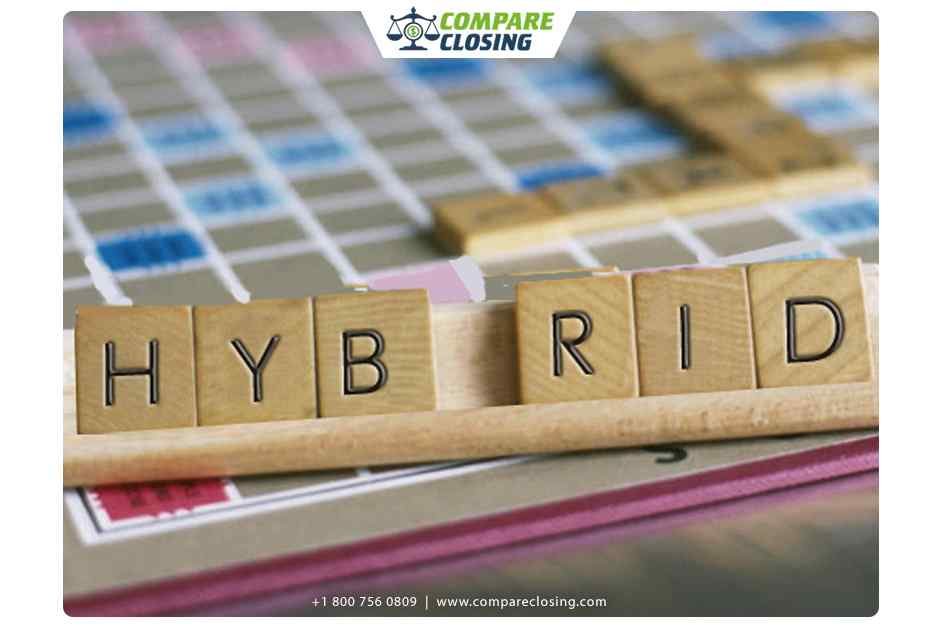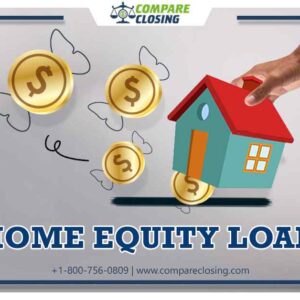Table of Contents
- What Are Netting Escrows & How Does It Work?: The Best Guide - January 2, 2024
- The Secret About Prescriptive Easement: Top Guide 1 Must Know - December 4, 2023
- About Home Equity Loans In Texas And How Can One Obtain It - November 27, 2023
All About Hybrid Mortgage
There are two popular home loan products, which are fixed-rate mortgages and adjustable-rate mortgages.
In a fixed-rate mortgage, the interest rate for the entire life of the loan is fixed.
An adjustable-rate mortgage (ARM) usually starts off with a lower interest rate and payment compared to a fixed-rate mortgage, but there is the possibility of an increase in interest during the loan term.
A hybrid mortgage has features of both fixed and adjustable loan types.
What is a hybrid mortgage?
A type of ARM that offers a fixed rate for a predetermined period and then an adjustable-rate for the rest of the loan term is called a hybrid mortgage.
Usually, the fixed interest rate is given for a period of 10 years to borrowers. Thereafter the interest rate becomes adjustable like a standard ARM.
During the ARM the interest rate can adjust monthly, quarterly, annually, or every few years.
An index is used to calculate mortgage adjustments. And to calculate your mortgage interest rate lenders tack on an additional margin percentage to the index.
An index, like the LIBOR, is a benchmark that’s used as a reference point. and index rates change because of economic conditions.
In times of economic prosperity, rates may trend upward to protect against inflation.
While during an economic downturn a decrease in index rates can take place to stimulate the market.
How does a hybrid mortgage work?
Hybrid mortgages are often expiring 3/1, 5/1, 7/1, or 10/1. 3, 5, 7, or 10 are the number of years interest is fixed.
The number 1 after 3, 5, 7, and 10 tells you how the interest rate will adjust after the fixed interest period ends.
The 1 here means your rate will adjust once every year.
There are some variations in the expression of hybrid mortgages so when shopping for a loan you should always discuss the terms with lenders.
The adjustable interest rate comes with some level of risk. what may happen to your rate during the adjustable-rate period cannot be predicted with absolute certainty, they could go up, or they could go down.
However, if you keep checking the index your lender uses and pay attention to economic conditions then it could help you make a guess on how your rate will move.
The interest rate and payment caps
Because of caps the interest rates and payments can be adjusted. In hybrid mortgage terms, there could be the inclusion of multiple-rate cap conditions.
There is an initial adjustment cap with hybrid mortgages which limits how much your rate can adjust the first time after the fixed-rate period ends.
Also to limit the rate hikes for each adjustment period there can be a cap in place.
From one adjustment period to another you cannot exceed the typical percentage cap of two percent.
To limit the number of percentage points your rate can increase overall, a lifetime rate cap may also be added.
There can be restrictions on the monthly payments also. Though it is a relief to hear that the lender is capping your monthly outgo, it can also cause you some trouble.
If your payment isn’t enough to cover the interest due on the loan then the loan can go into negative amortization.
In such a case, you could land up owing more than your initial loan amount. another factor to discuss with your lender is the conditions for negative amortization.
What’s the appeal of the hybrid mortgage?
Compared to the standard 30-year, fixed-rate mortgage hybrid mortgages and other ARMs usually have a lower starting introductory interest rate.
When offering a fixed rate for such a long loan term, lenders take on the risk and you get charged a bit more for the peace of mind.
Though the initial savings from a hybrid mortgage can make it seem like a wonderful opportunity, the competitive interest rate and payments will not last forever.
As the interest rates and payments are proportionate to each other, with the interest rates going up, your payment will follow. You would be taking a chance expecting your rate to go down.
because of the certainty, it can provide some homebuyers, consider it better to forgo the upfront savings and stick with the long-term fixed-rate mortgage.
While in other situations, the lower starting monthly payment for the first three, five, or ten years can be used strategically.
Let us look at scenarios where a hybrid mortgage can make sense for you.
If you’re considering a hybrid mortgage, then to help you determine potential costs you need to ask a few questions to your lender:
- The duration of the fixed-rate period
- The index they use to calculate the interest rate
- The margin you add onto the index rate
- After the fixed-term ends, how frequently will your rate adjust?
- The rate cap per adjustment
- The rate cap for the life of the loan
- If there is a payment cap, what is it and how will a negative amortization be handled?
The ups of a hybrid mortgage
The long, fixed-rate period – A fixed introductory interest rate in a hybrid mortgage that lasts for a good amount of time.
The fixed-rate along with the ARM in the mortgage lets you enjoy the benefits of both mortgage types.
Possibly lower starting payments – A lower starting interest at the beginning of the mortgage compared with other fixed-rate mortgage products is an additional benefit with a hybrid mortgage.
You can save upfront because a lower interest rate can offer you a lower mortgage payment.
What you save from the introductory period can be used elsewhere in the new home, like furnishing, improvements, or decor.
If the rates trend downward, then it can also lead to long-term savings.
Rate caps – Even if the rates increase after the fixed period but they can’t increase uncontrollably.
Since hybrid mortgages have rate caps, there are few guidelines for the amount that your rate can change.
The downside of a hybrid mortgage
The risk and uncertainty after the fixed period – even if there are rate caps, still you could be paying more later.
You will not have an idea of what your payments will be after five, ten, or fifteen years from now.
You need to be aware of economic trends so you know about your rate. But you still can’t predict what your future interest rate will be.
Payment caps – because of a payment cap negative amortization can result in a huge financial blow.
Check what rate caps and payment caps can mean for your loan with your lender.
Is a hybrid mortgage right for you?
Knowing that the interest rate will fluctuate at some point is what borrowers should be aware of before going into a hybrid mortgage, or any other ARM product.
In some situations, this product can be a good move while in other cases you should simply stick with a fixed-rate mortgage.
Sometimes If you’re expecting to have a high-paying job, or will be receiving cash before the fixed-rate period term ends, where you may be able to easily afford higher payments when the rate adjusts.
In such cases, a small payment upfront is worth the risk of having a larger payment later where the low starting pay for a hybrid mortgage can be attractive to buyers.
In case a buyer intends to sell the home quickly anyway so they’ll avoid the ARM period altogether they can opt for the hybrid mortgage.
If you’re banking on a sale, then you should have a deep understanding of the local housing market. Otherwise, you would be having a house that you don’t want with a high payment.
When is a hybrid mortgage not right for you?
If you want certainty for you then consider a fixed-rate mortgage. If you have some major expenses coming around the time frame your loan will begin like college fees or weddings then hybrid mortgages should be avoided.
Even a small increase in your payment will add pressure to your finances. A fixed-rate mortgage is safe and easier to work into your budget.
Conclusion
When deciding to go for a hybrid mortgage, you should be aware of what the economic conditions are before you’re getting yourself into it.
With a hybrid mortgage, you can also opt to refinance later to a fixed-rate mortgage. your ability to get approved depends on your home value or your credit.
Amanda Byford
Amanda Byford has bought and sold many houses in the past fifteen years and is actively managing an income property portfolio consisting of multi-family properties. During the buying and selling of these properties, she has gone through several different mortgage loan transactions. This experience and knowledge have helped her develop an avenue to guide consumers to their best available option by comparing lenders through the Compare Closing business.





